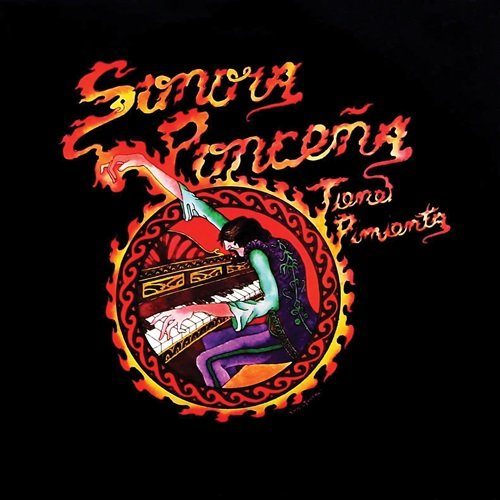The Locatelli Trio - Albinoni: Sonatas, Op. 4 "da Chiesa" & Sonatas, Op. 6 "Trattenimenti armonici" (1994)
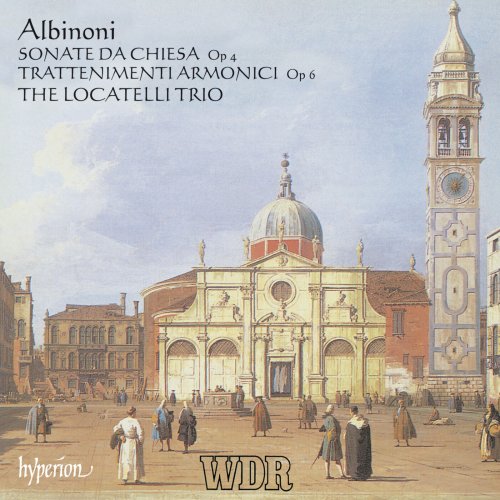
Artist: The Locatelli Trio
Title: Albinoni: Sonatas, Op. 4 "da Chiesa" & Sonatas, Op. 6 "Trattenimenti armonici"
Year Of Release: 1994
Label: Hyperion
Genre: Classical
Quality: flac lossless (tracks) +Booklet
Total Time: 02:39:20
Total Size: 871 mb
WebSite: Album Preview
TracklistTitle: Albinoni: Sonatas, Op. 4 "da Chiesa" & Sonatas, Op. 6 "Trattenimenti armonici"
Year Of Release: 1994
Label: Hyperion
Genre: Classical
Quality: flac lossless (tracks) +Booklet
Total Time: 02:39:20
Total Size: 871 mb
WebSite: Album Preview
CD1
01. Sonata in C Major, Op. 6 No. 1: I. Grave
02. Sonata in C Major, Op. 6 No. 1: II. Larghetto
03. Sonata in C Major, Op. 6 No. 1: III. Adagio
04. Sonata in C Major, Op. 6 No. 1: IV. Allegro
05. Sonata in G Minor, Op. 4 No. 4: I. Adagio
06. Sonata in G Minor, Op. 4 No. 4: II. Allegro
07. Sonata in G Minor, Op. 4 No. 4: III. Adagio
08. Sonata in G Minor, Op. 4 No. 4: IV. Allegro
09. Sonata in B-Flat Major, Op. 6 No. 3: I. Grave
10. Sonata in B-Flat Major, Op. 6 No. 3: II. Allegro
11. Sonata in B-Flat Major, Op. 6 No. 3: III. Adagio
12. Sonata in B-Flat Major, Op. 6 No. 3: IV. Presto
13. Sonata in F Major, Op. 6 No. 5: I. Grave
14. Sonata in F Major, Op. 6 No. 5: II. Allegro
15. Sonata in F Major, Op. 6 No. 5: III. Adagio
16. Sonata in F Major, Op. 6 No. 5: IV. Allegro
17. Sonata in B Minor, Op. 4 No. 6: I. Largo
18. Sonata in B Minor, Op. 4 No. 6: II. Allegro
19. Sonata in B Minor, Op. 4 No. 6: III. Adagio
20. Sonata in B Minor, Op. 4 No. 6: IV. Allegro
21. Sonata in G Major, Op. 6 No. 9: I. Grave
22. Sonata in G Major, Op. 6 No. 9: II. Allegro
23. Sonata in G Major, Op. 6 No. 9: III. Adagio
24. Sonata in G Major, Op. 6 No. 9: IV. Allegro
25. Sonata in C Minor, Op. 6 No. 10: I. Grave
26. Sonata in C Minor, Op. 6 No. 10: II. Allegro
27. Sonata in C Minor, Op. 6 No. 10: III. Adagio
28. Sonata in C Minor, Op. 6 No. 10: IV. Allegro
29. Sonata in G Minor, Op. 4 No. 5: I. Adagio
30. Sonata in G Minor, Op. 4 No. 5: II. Allegro
31. Sonata in G Minor, Op. 4 No. 5: III. Adagio
32. Sonata in G Minor, Op. 4 No. 5: IV. Presto
33. Sonata in D Major, Op. 6 No. 7: I. Grave
34. Sonata in D Major, Op. 6 No. 7: II. Allegro
35. Sonata in D Major, Op. 6 No. 7: III. Adagio
36. Sonata in D Major, Op. 6 No. 7: IV. Allegro
CD2
01. Sonata in D Major, Op. 6 No. 2: I. Grave
02. Sonata in D Major, Op. 6 No. 2: II. Larghetto
03. Sonata in D Major, Op. 6 No. 2: III. Largo
04. Sonata in D Major, Op. 6 No. 2: IV. Allegro
05. Sonata in D Minor, Op. 4 No. 1: I. Adagio
06. Sonata in D Minor, Op. 4 No. 1: II. Allegro
07. Sonata in D Minor, Op. 4 No. 1: III. Largo
08. Sonata in D Minor, Op. 4 No. 1: IV. Allegro
09. Sonata in E Minor, Op. 6 No. 8: I. Grave
10. Sonata in E Minor, Op. 6 No. 8: II. Allegro
11. Sonata in E Minor, Op. 6 No. 8: III. Adagio
12. Sonata in E Minor, Op. 6 No. 8: IV. Allegro
13. Sonata in A Major, Op. 6 No. 11: I. Grave
14. Sonata in A Major, Op. 6 No. 11: II. Allegro
15. Sonata in A Major, Op. 6 No. 11: III. Adagio
16. Sonata in A Major, Op. 6 No. 11: IV. Allegro
17. Sonata in E Minor, Op. 4 No. 2: I. Adagio
18. Sonata in E Minor, Op. 4 No. 2: II. Allegro
19. Sonata in E Minor, Op. 4 No. 2: III. Largo
20. Sonata in E Minor, Op. 4 No. 2: IV. Allegro
21. Sonata in B-Flat Major, Op. 6 No. 12: I. Grave
22. Sonata in B-Flat Major, Op. 6 No. 12: II. Allegro
23. Sonata in B-Flat Major, Op. 6 No. 12: III. Adagio
24. Sonata in B-Flat Major, Op. 6 No. 12: IV. Allegro
25. Sonata in D Minor, Op. 6 No. 4: I. Grave
26. Sonata in D Minor, Op. 6 No. 4: II. Larghetto
27. Sonata in D Minor, Op. 6 No. 4: III. Adagio
28. Sonata in D Minor, Op. 6 No. 4: IV. Allegro
29. Sonata in F Major, Op. 4 No. 3: I. Largo
30. Sonata in F Major, Op. 4 No. 3: II. Allegro
31. Sonata in F Major, Op. 4 No. 3: III. Adagio
32. Sonata in F Major, Op. 4 No. 3: IV. Giga
33. Sonata in A Minor, Op. 6 No. 6: I. Grave
34. Sonata in A Minor, Op. 6 No. 6: II. Allegro
35. Sonata in A Minor, Op. 6 No. 6: III. Adagio
36. Sonata in A Minor, Op. 6 No. 6: IV. Allegro
Venetian instrumental music of the late Baroque is dominated by three names: Vivaldi, Marcello and Albinoni. These three composers had very contrasting artistic personalities that derived in part from their different social origins. The father of Antonio Vivaldi (1678–1741) was an accomplished violinist who, like Leopold Mozart two generations later, was able to pass on a great deal of professional know-how to his even more gifted son and introduce him to the challenging worlds of church music and the operatic stage. Benedetto Marcello (1686–1739) was a member of a prominent patrician family, a noble dilettante for whom music was a passionate leisure-time pursuit but not a means of earning a livelihood.
The family background of Tomaso Albinoni (1671–1751) was more unusual. His father was the former assistant of a manufacturer of playing cards who inherited the business, and with it the prosperity, of his employer. Tomaso served his apprenticeship in the trade and after his father’s death in 1709 acquired the licence to continue the business. However, by that time he had immersed himself so deeply in music as a singer, violinist and composer that he took no active part in the family business, leaving its management to two younger brothers—perhaps fortunately, since it eventually failed. In theory, he remained to the end ‘a maker of cards’ (the words used by the historian Hawkins), just as, much later, Schubert was never able to disavow his official profession of ‘schoolmaster’.
Being a musician, but not originating from the musical fraternity, and being tolerably prosperous, but nevertheless not a gentleman in the eyes of society, made Albinoni a slightly marginal person. His marriage in 1705 to a noted singer, Margherita Raimondi, helped to immerse him more deeply in the operatic world; indeed, it was as a composer of opera, with possibly as many as eighty works to his credit, that he made his reputation in his native Venice and in Italy. But he never became a member of the Arte de’ Sonadori, the Venetian guild of instrumentalists, and played the violin little in public. Instead, he ran a kind of cottage industry purveying instrumental compositions—sonatas and concertos—to any who wished to buy them. His patrons included the nobility local and foreign, and the tourists who flocked to Venice in the winter from all over Europe. At intervals he gathered together, in sets of twelve, his best compositions in a given genre, polished them and sent them to be published. His first such collection, containing trio sonatas, came out in 1694; his tenth and last, a set of concertos, appeared in 1735 or 1736 (though it appears that an Opus 11 was received by the publisher, Le Cène of Amsterdam, but never issued).
A few years after Albinoni made his debut in print the nature of the music-publishing industry began to change decisively. In Italy, where the technology of printing music from movable type, established in the sixteenth century, still held sway, music publishing, with few exceptions, resembled what we today call ‘private publication’ or, less kindly, ‘vanity publishing’: the composer made the first approach to the printer and paid him to publish and perhaps also market the music. Some of the costs of production could be borne by a patron, whose generosity would be recorded, always obliquely and accompanied by the most fawning flattery, in a letter of dedication opening the volume, but the publisher himself shared none of the financial risk and consequently played no proactive role in the choice of repertoire.
In north-western Europe, however, the circumstances were different. The potential market for instrumental music in standard genres was higher than in Italy on account of the greater size, prosperity and cultural aspirations of the middle classes, and also the absence of competition from professional music-copyists. Moreover, the technology used to publish music—the process of engraving on plates—was much more adequate to its task: for example, in type-printed music all quavers tended to appear with their own ‘flag’, whereas in engraved music groups of two or more quavers could be beamed together as in manuscript notation. The leading publishers, John Walsh in London and Estienne Roger in Amsterdam, satisfied the great public vogue for Italian music by the wholesale ‘pirating’ (that is, copying without permission) of Italian editions. Even this was not enough to satisfy demand, and the publishers began to establish direct contact with Italian composers who one by one deserted their native publishers and sent their works to London and Amsterdam for engraving. In some cases the publishers absorbed the production costs themselves. Small wonder that the Italian music-printing industry, unable to compete, virtually collapsed after about 1710.
Besides pirating Italian works or accepting them directly from their composers’ hands, Roger and Walsh sought independently to acquire copies of manuscripts by established masters. If found suitable, these could be brought out, quite unbeknown to their authors, as simple commercial ventures. In this way, several ‘unofficial’ collections of sonatas and concertos by eminent composers appeared either without an opus number or under a bogus one. Three out of four of the sets of violin sonatas published under Albinoni’s name were of this kind; the well-known set of six cello sonatas by Vivaldi is another example.
There was, however, an inherent problem in this kind of enterprise. Published works were expected, like eggs or loaves, to be sold in dozens or half-dozens. Works found in manuscript, however, followed no such fixed principle. It was often necessary, therefore, for the publisher to find one or more makeweights to bring the number of works up to the required total. These extra works were frequently not authentic, and in principle it is wise to regard all works included in ‘unofficial’ published collections as suspect. Similarly, the fact that the composers were, for obvious reasons, not invited to read the proofs of these works means that their texts are often corrupt and have to be corrected carefully before use.
Roger brought out in 1708 a set of six violin sonatas which he described on the title page as Sonate da chiesa a violino solo e violoncello o basso continuo da Tomasso [sic] Albinoni. Significantly, no opus number was originally present. It was only later, when reissuing the sonatas, that Roger decided to insert a line with the legend ‘Opera Quarta’ (Op 4). The real Opus 4 was a set of cantatas published in 1702, but since Roger had not chosen to pirate it (cantatas were less marketable outside Italy than instrumental works), he doubtless considered that there was a gap in the series of opus numbers waiting to be filled. The title, which may well have been devised by Roger himself, suggests that these are ‘church’ sonatas of the Corellian kind. In fact, they are not: they are eclectic in style, borrowing from the church sonata the favourite four-movement plan (slow–fast–slow–fast) but retaining a strong flavour of the dance in several quick movements. As in many violin sonatas of the time, the bass is ostensibly for either cello or harpsichord but not both together (this is the significance of the little word ‘o’ in the title). Musicologists are not yet agreed about how literally one should take such a wording. However, the general consensus is that for eighteenth-century works it is usually permissible, indeed beneficial, to use both cello and harpsichord together, even though either may be employed successfully on its own.
This pseudo Op 4 introduces us to Albinoni’s style. It exhibits classic restraint (chromaticism is severely rationed) and pays great attention to beauty of design in the melodic line, which undulates in a markedly vocal manner and reminds us of the composer’s great experience of writing for the voice. This is eminently rational music that, in the apt words of Arthur Hutchings, ‘did not attempt such expression as could not be stylized convincingly—shaped in clear and readily understood ideas and extended into almost perfect forms’.
6 Sonate da chiesa, Op 4
Sonata 1 contains some quintessentially Albinonian musical ideas that were to appear in later works. Versions of the first, second and fourth movements appear in the opening sonata of a second ‘unofficial’ set of violin sonatas published in 1717, while the second movement prefigures its counterpart in Op 6 No 4. This sonata is typical of Albinoni in that the slow movements are in a through-composed form that eschews any kind of reprise of the opening, while the quick movements employ an almost perfectly symmetrical binary form. Sonata 2 has a similar second movement that opens with the same melodic-harmonic formula but strikes out along a new path in the following slow movement, conceived as a kind of instrumental recitative. Calmer in mood, Sonata 3 shows Albinoni at his most elegant. It is Sonata 4 that is the odd man out. Certain notational features set it apart from the five other works (for example, the use of a cross rather than the letter ‘t’ to denote a trill), and its style shows a mixture of French and Italian elements that suggests a north European composer. One cannot say categorically that it is unauthentic, but suspicions remain. Sonata 5, likewise in G minor (the duplication of key is in itself anomalous), returns to Albinoni at his most elegiac. Its second movement contains the highest note, G above the treble stave, found in any Albinoni work, while its finale, a perpetuum mobile in triple time, has earned the admiration of commentators. Sonata 6, in B minor, is overall the strongest work in the set. Remarkably, its violin part shuns double-stopping altogether and descends no lower than E sharp above middle C, which has led to the suggestion that it was originally a work for alto recorder. Its second movement demonstrates Albinoni’s mastery of counterpoint, being a fugue in two parts very similar to the cavatas (aria-like settings of the closing lines of recitatives) found in his cantatas.
12 Trattenimenti armonici per camera, Op 6
In 1711 or slightly later Albinoni himself took the initiative when he entrusted a set of violin sonatas to Roger. These were his Trattenimenti armonici per camera a violino, violone e cembalo, Opus 6. ‘Trattenimento’, meaning ‘entertainment’, has no special significance; it is just the collective title the composer happened to choose for a collection of works individually headed ‘Sonata’. ‘Per camera’ (literally, ‘for the chamber’) indicates that these pieces are for recreational, not functional, use. Although most chamber sonatas consisted largely of dance movements, there existed a parallel tradition employing movements of wholly ‘abstract’ character. In fact many of the fast movements in Op 6, as in the pseudo Op 4, are covert allemandes, courantes and gigues, so the abstractness is fairly compromised. ‘Violone’ means in theory the old bass violin, of which the cello was a slightly smaller version developed after 1650, but in practice the works will have been played on the latter instrument. Albinoni dedicated the sonatas to a Venetian nobleman, Giovanni Francesco Zeno, to whom he may have given violin lessons.
These works are even more uniform in their general character than those of the earlier collection. To discover the personality of each sonata, one has to take the four-movement framework as an invariable element and go into the small details. Their rejection of overt virtuosity in favour of a cool elegance is vintage Albinoni but also reflects the musical climate of the 1710s. The development of the concerto, to which Albinoni himself had made a notable contribution, had given composers and performers a ready-made vehicle for special effects, leaving the sonata as the repository of conservative musical and technical values. Vivaldi’s Op 5 and Valentini’s Op 8, both from the same decade, share this restraint, which also suited to perfection the needs of the amateurs of northern Europe.
There is space to mention only a few of the high points of this fastidiously crafted set. In Sonata 1 the chromatic ending of the first movement and the hustle and bustle of the gigue-like finale stand out. Sonata 2 has perhaps the most impressive of the slow movements. This is the Largo, which is in the mellow-sounding key of E flat major. It is constructed over a recurring bass figure (a ground bass) which modulates through a succession of keys. Sonata 3 has one of the most ornate opening movements (although Albinoni never fills his solo lines with so much embellishment that the player cannot add an additional quota). Violinistic display dominates Sonata 4. Here both slow movements have shimmering arpeggiation before the final cadence, while the fast movements exploit double-stopping as a percussive effect.
Sonata 5 has another striking second slow movement. This is one of the rare slow movements to bring the opening idea back near the end and (a few bars later) to allow the cello to detach itself, if only fleetingly, from the harpsichord. Sonata 6 survives separately in a contemporary manuscript as a recorder sonata. In all its movements, but particularly the second, there are delicious imitative exchanges between the violin and the bass. Sonata 7 has the bluff good humour traditionally associated with the key of D major; its last movement, too, has some deft contrapuntal exchanges between treble and bass. An opening chromatic bass line proclaims Sonata 8 as a work charged with high emotion; the rasping violin chords in its second movement convey a mood of desperate urgency.
In its fast movements Sonata 9 employs double-stopping of a more contrapuntal kind, so that the single violin simulates the sound of the two violins in a trio sonata. In the second movement the bass has some dazzling rapid flights. Sonata 10 is what one expects a work in C minor from the period to be—broodingly passionate. Its second and fourth movements are perfect stylizations of the allemande and gigue respectively. In style Sonata 11 is the most concerto-like work in the set; the sequential roulades in its outer movements recall the violin concertos of Albinoni’s Opp 7 (1715) and 9 (1722). Its finale displays Albinoni’s mastery of the rhythmic device known as ‘hemiola’, in which 6/8 and 3/4 metre (both employing six quavers to the bar) effectively alternate. In final place comes Sonata 12, a work without any special emphases but which encapsulates the qualities of the set as a whole: vitality, neatness and, above all, dignity.
Albinoni’s immense popularity in his own day stemmed from his ability to create a well-ordered music fit for the well-ordered society that social and political reformers saw (very prematurely) within their grasp. In one sense, this is an artistic limitation, but within its confines Albinoni constructs an original world whose integrity and sureness of purpose impress us today.
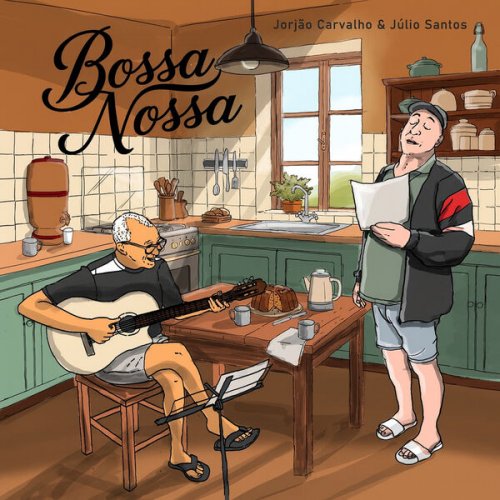
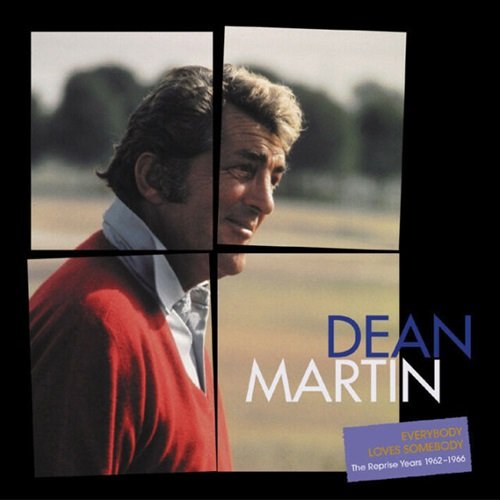

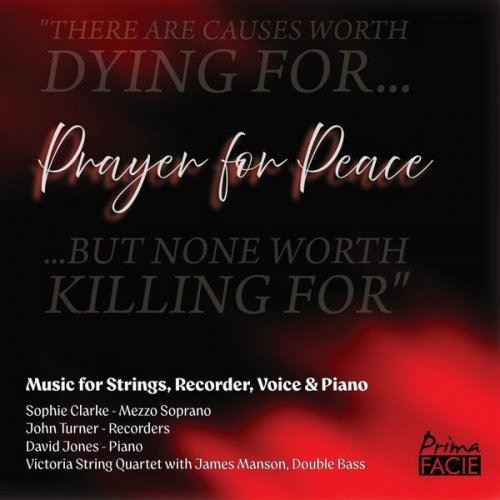
![Nectar Woode - Live at Village Underground (Live At Village Underground) (2025) [Hi-Res] Nectar Woode - Live at Village Underground (Live At Village Underground) (2025) [Hi-Res]](https://img.israbox.com/img/2025-12/15/eiazyx7yigt2lhbv1tcd3eos6.jpg)

![Tomasz Stańko, Tomasz Szukalski, Dave Holland & Edward Vesala - Balladyna (1976/2025) [Hi-Res] Tomasz Stańko, Tomasz Szukalski, Dave Holland & Edward Vesala - Balladyna (1976/2025) [Hi-Res]](https://www.dibpic.com/uploads/posts/2025-12/1765717548_cover.jpg)

